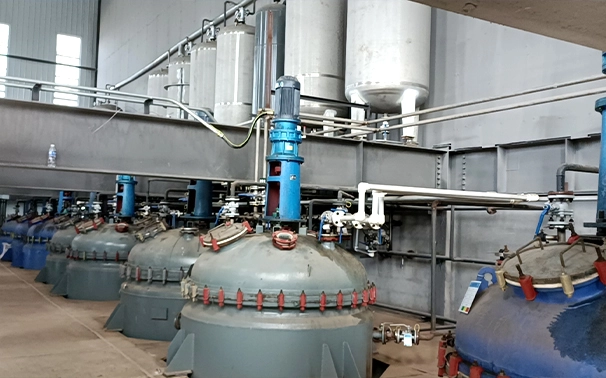polyacrylamide water treatment
The Role of Polyacrylamide in Water Treatment
Polyacrylamide (PAM) is a synthetic polymer commonly utilized in various water treatment processes. Its significant effectiveness in clarifying water and improving water quality has made it an essential tool in the environmental engineering and water treatment industries. This article discusses the mechanisms of action, benefits, applications, and considerations of using polyacrylamide in water treatment.
Mechanisms of Action
The primary function of polyacrylamide in water treatment is as a flocculant. Flocculation is the process of agglomerating fine particles in suspension to form larger aggregates, or flocs, that can be easily removed from the water. PAM is soluble in cold water, and when introduced into water, it interacts with the suspended particles. The polymer chains of PAM have a high molecular weight, allowing them to bridge the gaps between particles, which facilitates the formation of these flocs.
In addition, PAM can be anionic or cationic, with each type having different charges that influence their effectiveness in treating various types of water pollution. Anionic PAM is commonly used for removing contaminants like silts and colloids, while cationic PAM is particularly effective in binding negatively charged materials, such as organic matter and sediments.
Benefits of Using Polyacrylamide
The advantages of polyacrylamide in water treatment are numerous. Firstly, PAM can significantly reduce the levels of total suspended solids (TSS) in treated water, leading to improved clarity. This is particularly beneficial for systems where visual quality is important, such as recreational water bodies.
Secondly, PAM enhances the efficiency of other treatment processes. For example, by improving floc formation and settling rates, it can lead to reduced chemical usage and lower operational costs in water treatment plants. Additionally, PAM helps to reduce the volume of sludge produced in the sedimentation process, subsequently lowering disposal costs.
Moreover, PAM is compatible with various water chemistry conditions, making it versatile for use in different types of water treatment applications, including municipal wastewater treatment, industrial effluents, and even agricultural runoff.
polyacrylamide water treatment

Applications
The applications of polyacrylamide in water treatment are extensive. In municipal wastewater treatment, for instance, PAM is used to enhance sedimentation processes, ensuring that solid waste is effectively separated from wastewater. Industrial facilities utilize it for treating water used in processes such as oil drilling, paper manufacturing, and mining. In agriculture, PAM is increasingly used in erosion control and improving water infiltration in soils, which complements its role in managing water quality.
Furthermore, with the growing concern over microplastics and pharmaceuticals in water sources, PAM is being studied for its potential in removing these pollutants. Its ability to bind with small particles makes it a valuable addition to advanced water treatment systems.
Considerations and Future Developments
While polyacrylamide presents many benefits, it is not without concerns. The potential environmental impact of residual PAM in treated water raises questions about toxicity and bioaccumulation. Therefore, ongoing research is paramount to assess PAM's long-term effects on ecosystems and human health.
Moreover, industry standards and regulations must evolve to monitor and manage the use of PAM. In light of climate change and increasing pollution levels, finding sustainable and efficient water treatment solutions becomes crucial. Innovations in PAM formulations, such as biodegradable and environmentally friendly alternatives, are currently in the research phase.
Conclusion
Polyacrylamide plays a pivotal role in modern water treatment practices, enhancing water quality and treatment efficiency. Though challenges remain regarding its environmental impact, continued research and development promise to make PAM a safer and more sustainable option for the future. As water quality continues to be a global priority, the importance of polyacrylamide and similar technologies will undoubtedly grow.
-
lk-319-special-scale-and-corrosion-inhibitor-for-steel-plants-advanced-solutions-for-industrial-water-systemsNewsAug.22,2025
-
flocculant-water-treatment-essential-chemical-solutions-for-purification-processesNewsAug.22,2025
-
isothiazolinones-versatile-microbial-control-agents-for-industrial-and-consumer-applicationsNewsAug.22,2025
-
scale-inhibitor-key-solutions-for-water-system-scale-preventionNewsAug.22,2025
-
organophosphonates-versatile-scale-inhibitors-for-industrial-water-systemsNewsAug.22,2025
-
scale-and-corrosion-inhibitor-essential-chemical-solutions-for-water-system-maintenanceNewsAug.22,2025





